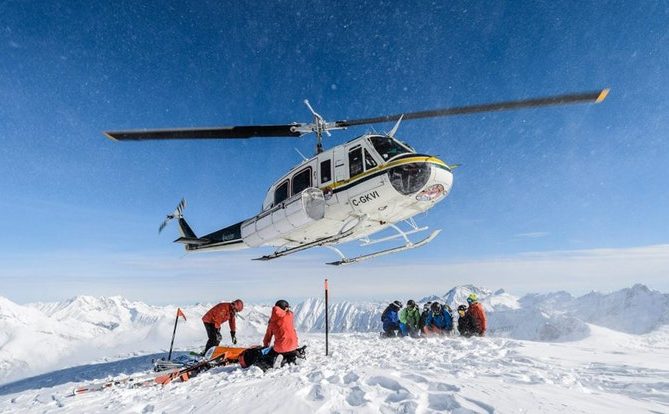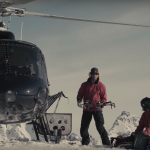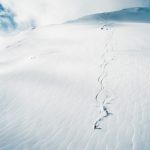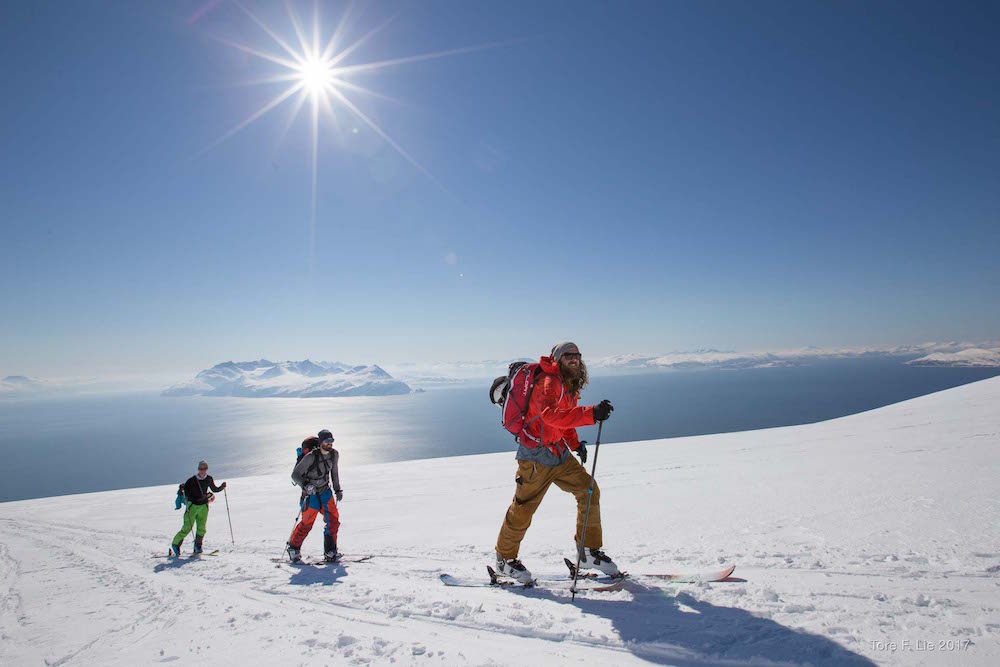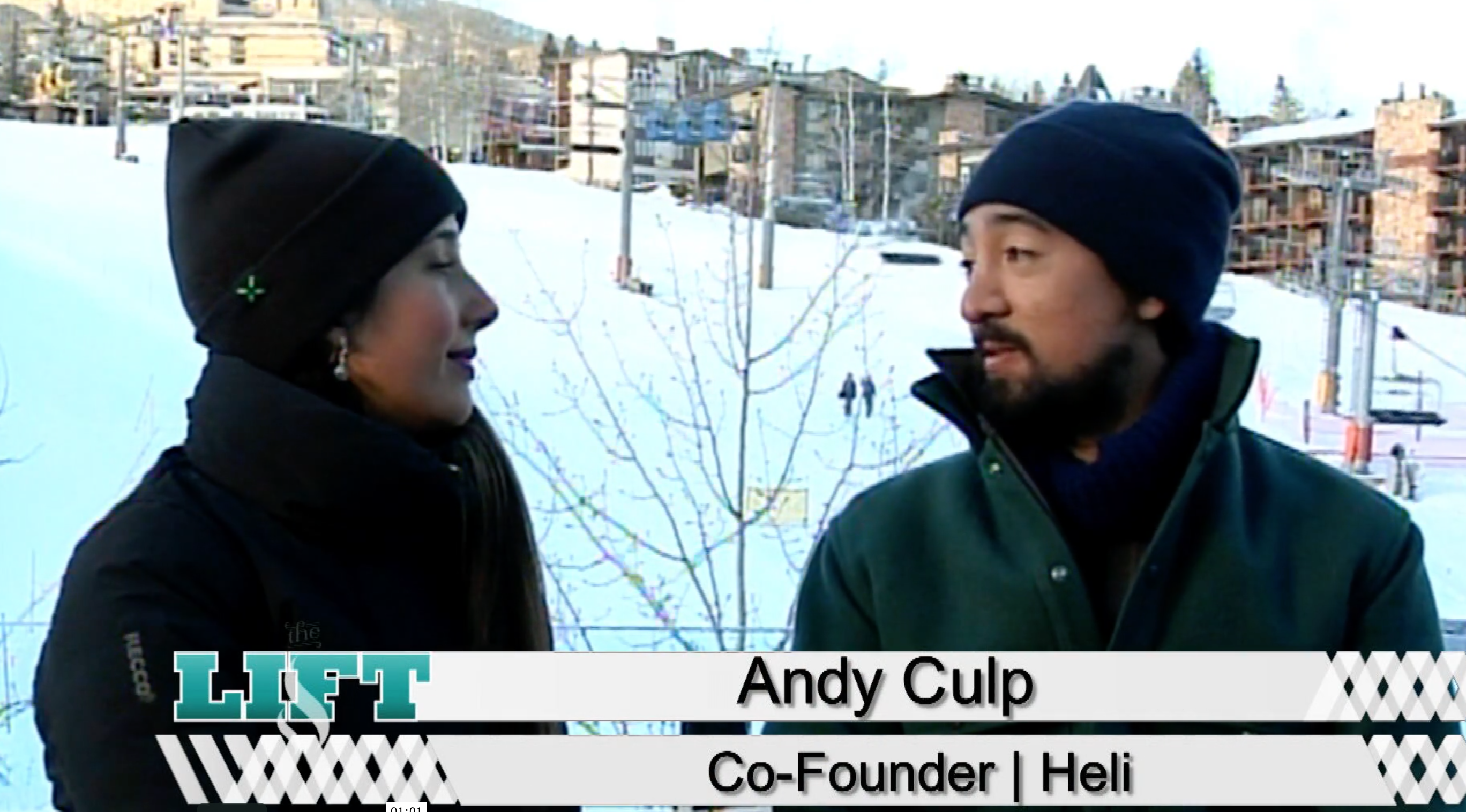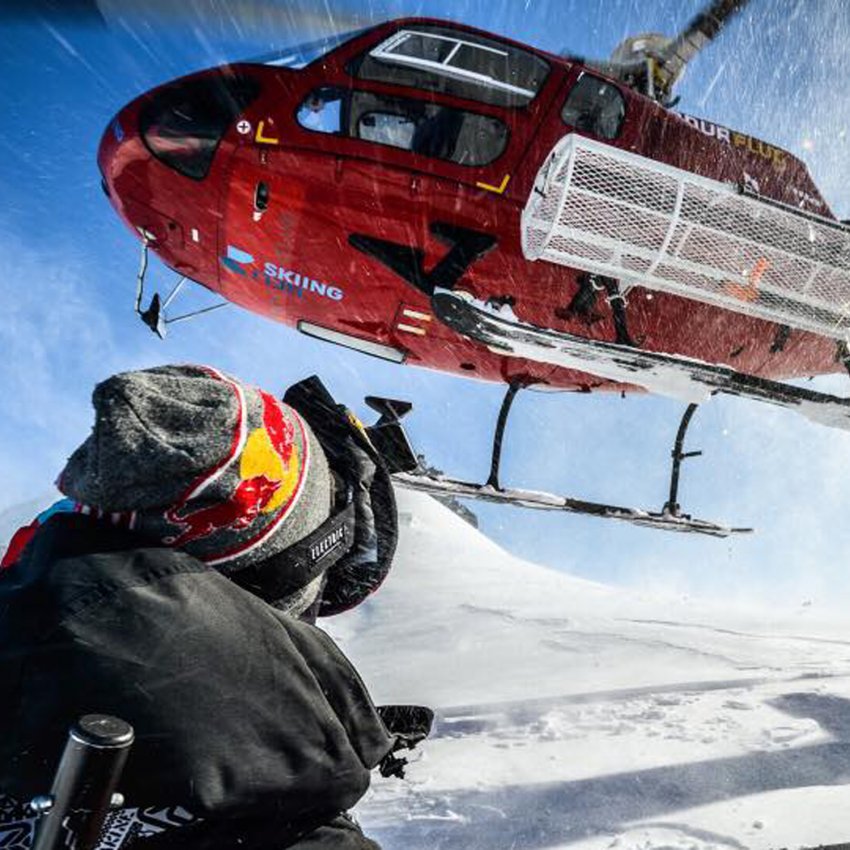This exotic adventure sport—where a helicopter takes skiers to summits no lift can reach—is becoming more accessible, thanks to an innovative tour outfit called Heli.
Most resort skiers have a vague idea what heli-skiing is, and that picture centers around it being an activity for the very wealthy and the odd sponsored athlete on a catalog photo shoot. Unfortunately, it’s a truism with a little too much truth to it.
But two young entrepreneurs want to change that. With the founding of heli.life (yes, there’s a .life domain now), Brandon Darnton and Brock Strasbourger hope to bring that legendary backcountry adventure, and a few others, to people who never thought they’d have the dough to go. Together with Heli founder and CEO Andy Culp, they’ve corralled some of heli-skiing’s top operators into an online travel clearinghouse, making searching and booking a more seamless process for a new generation of heli-skiers. We asked Darnton for a 300-foot-view of the industry.
Is heli-skiing a bucket-list activity, or is it within reach as an annual vacation?
“For some folks, heli-skiing is a once in a lifetime trip; the prospect of skiing/riding the best and most pristine lines in the world is so powerful that several years of planning and saving for a single trip is not unheard of. However, it’s definitely accessible enough to be an annual, semi-annual, or even more frequent indulgence.
“Heli offers new, different, and global bucket-list type options across the adventure category. Japan is very different than British Columbia, which is very different than Iceland and Alaska and Norway, etc. We feel that the days of going to the same operator for 20 years in a row are over. People want to explore new regions and embark on new experiences.”
Who are the people I’m likely to be with on a heli trip?
“Booking a private lodge for your own group of friends lets you control the entire experience, but meeting new people can be half the fun. If you choose a shared lodge trip, you’ll meet a wide variety of guests: Explorers. Adventurers. Curious folks. . . . There really is no ‘regular’ heli-skier. The only certainty about the type of people on the heli trip is that everyone loves to ski and loves the mountains. We’ve heli-skied with kids as young as 13 and older athletes well into their 70s who ski circles around younger guests. The beauty of heli-skiing, outside of the amazing terrain and conditions, is the relationships that you forge with people from all over the world, of all ages and abilities. It really isn’t about skill level as terrain can be catered to all types, shapes, and sizes. It’s mostly about connecting and about stepping outside of normality.”

How do people typically make the transition from resort skiers to heli-skiers?
“It’s generally understood that heli and other backcountry skiing adventures are the highest level of skiing experience that one can pursue. Once a skier or rider has gained a level of comfort skiing in a resort setting and has experienced the feeling of a deep powder day, they will be inclined to maximize that feeling. Heli-skiing is the best way to do that. The resort skiing experience is becoming increasingly more expensive and crowded. This increase in resort costs combined in many cases with a decreased experience has led a number of skiers to pursue heli trips as an alternative. Why have 10 average ski days at a resort when you can have five days of heli-skiing and get the best turns of your life for a similar price? It’s about quality over quantity.”
What does a heli-ski adventure cost?
“Costs can vary greatly depending on the length of stay, location, lodging options, time of year, etc. Generally, heli-skiing costs range from $750 to $1,500 per day, depending on the level of luxury, group size, and whether you’re paying for limited or unlimited vertical.”
What skill levels are required?
“An intermediate skier with the ability to ski powder is ready to go. Backcountry safety is paramount and while we encourage classes and training, all of our operators are personally vetted, safety certified, and provide sufficient training prior to taking customers into the backcountry. The general rule of thumb is that you need to be comfortable skiing down a black diamond at a resort. There is no previous backcountry experience required. Above all, a minimal level of fitness is very helpful.”
What happens to my trip when the weather isn’t cooperating?

